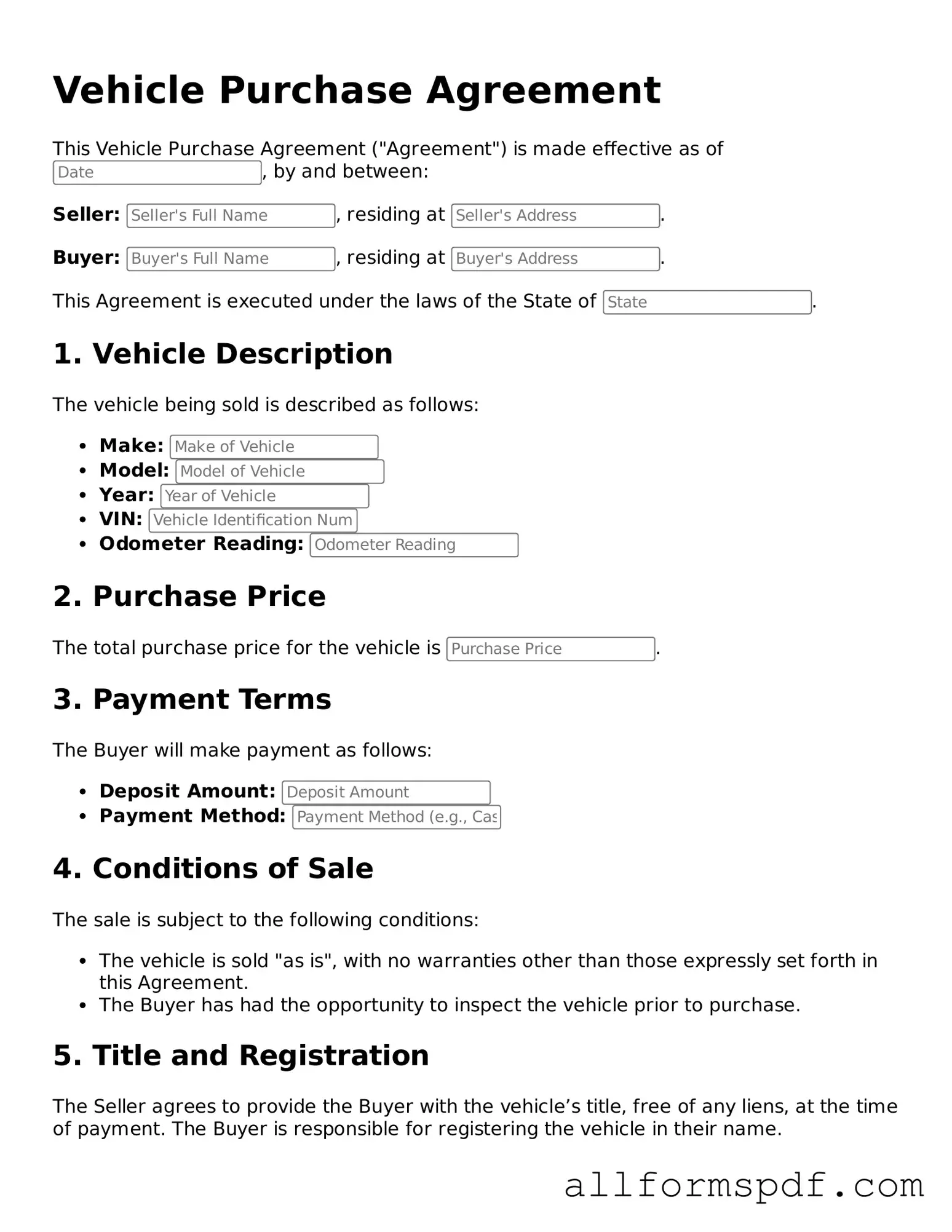When filling out a Vehicle Purchase Agreement form, many people make common mistakes that can lead to complications later on. One significant error is not reading the entire document carefully. Skimming through the agreement may seem efficient, but it can result in overlooking crucial details. These details might include financing terms, warranties, and specific conditions related to the sale.
Another frequent mistake is failing to provide accurate personal information. Buyers often rush through this section, leading to typos or incomplete data. Incorrect information can create issues with registration and financing. Always double-check names, addresses, and contact details to ensure everything is correct.
People also tend to neglect the importance of documenting the vehicle's condition. It is essential to note any existing damage or mechanical issues in the agreement. If this is not done, disputes may arise later regarding the vehicle's condition at the time of sale. Taking the time to inspect the vehicle and record any imperfections can save headaches down the line.
Additionally, buyers sometimes overlook the financing section. They may assume they understand the terms without fully grasping the implications. Interest rates, payment schedules, and total costs should be carefully reviewed. It is vital to understand what you are agreeing to, as this will impact your financial obligations for years to come.
Lastly, many individuals forget to obtain copies of the signed agreement. After completing the form, it is crucial to request a copy for your records. This document serves as proof of the transaction and can be invaluable if any disputes arise in the future. Keeping a well-organized record of all documents related to the purchase is essential for any vehicle owner.
